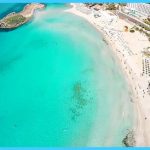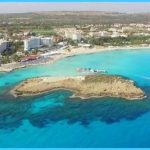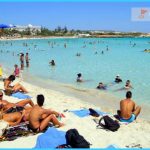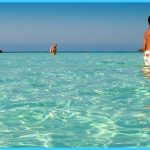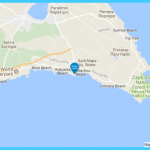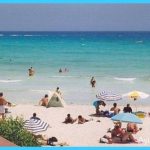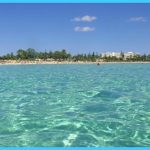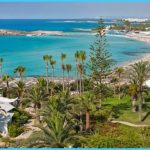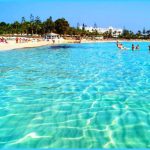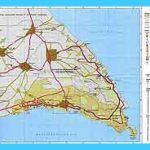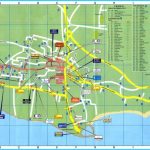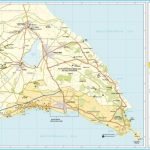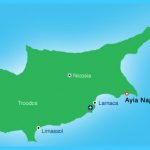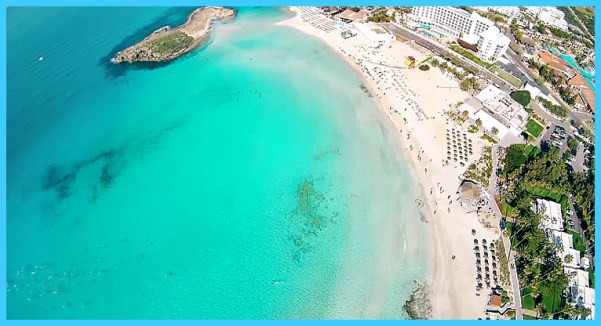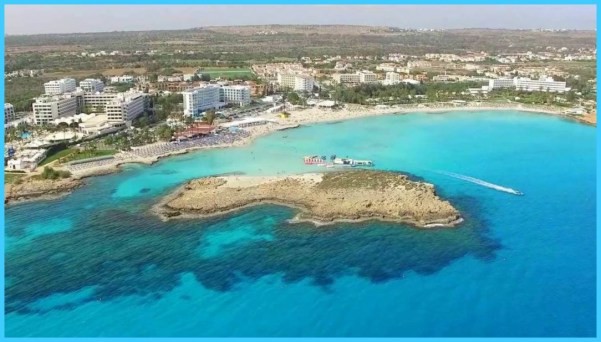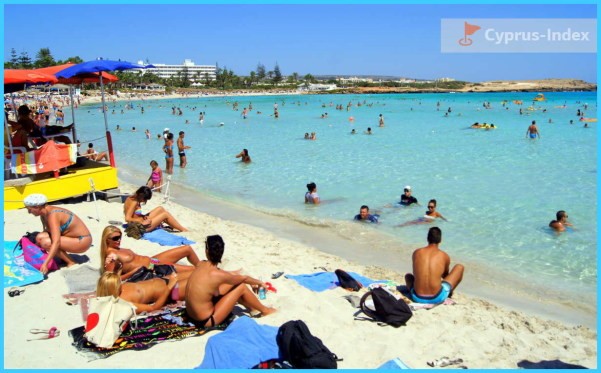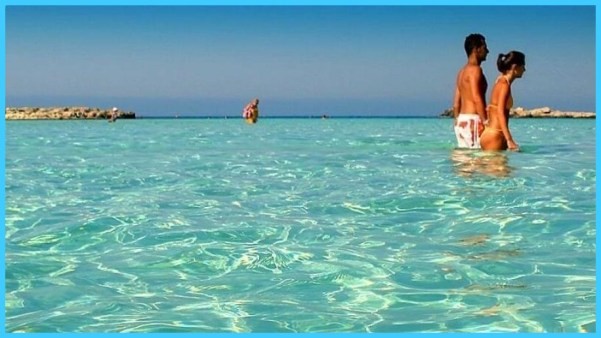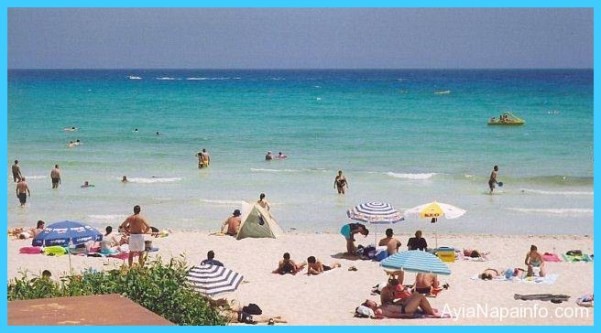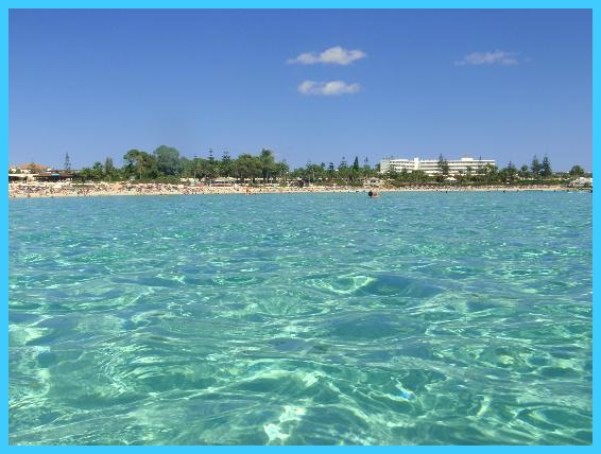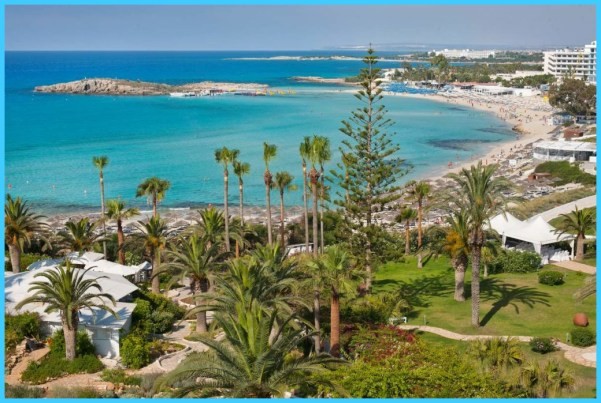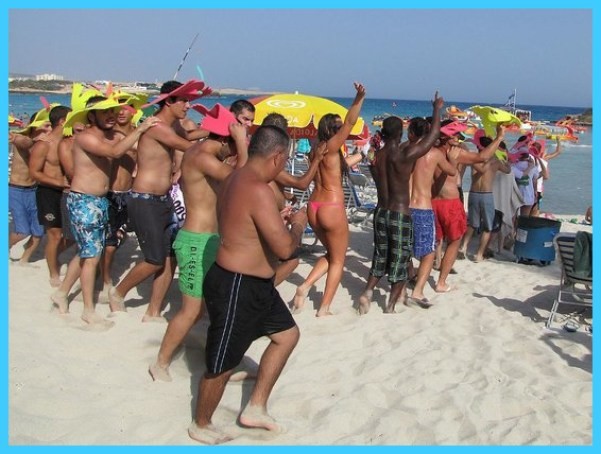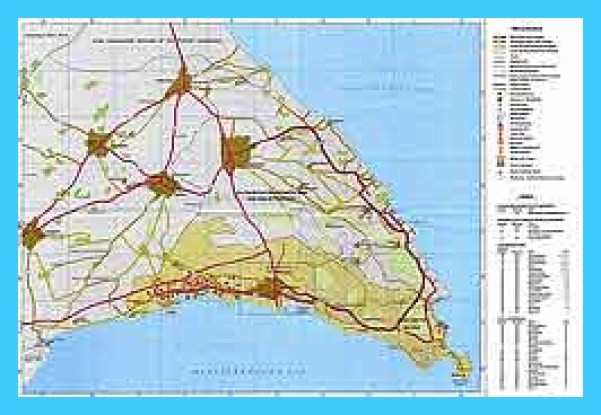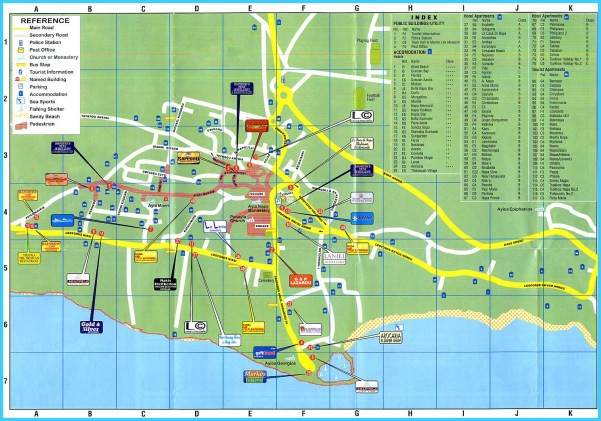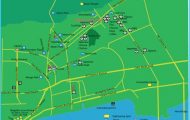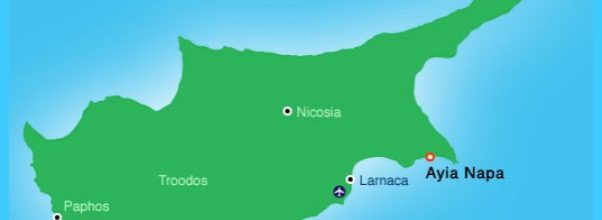
Nissi Beach
The traveller following an earthen road to the west of the cape and ascending a hillock, will enjoy the beauties of nature, since the view from this point is exceptionally impressive. A special feature of Cape Gkreko is the lighthouse, a construction of the last decades of the previous century. Its shape, towering, can be seen from afar. Cape Gkreko is one of the places worth visiting, so much for the beauty of the scenery as for the varied features on its landscape. The cape, which, as Sakellarios mentions, is called Teani by the locals, contains a site known as Tartsha. Here we come across the ruins of a temple dedicated to, most probably, Aphrodite. Gkreko National Forest Park. A national forest park, comprising an area of about 385 hectares has been established within the state land of Gkreko as from 1993. Within the entire national forest park area three car parks have been set up as well as a pavillion and other facilities near the Konnos bay. In addition, existing lanes have been improved and some have been converted into comfortable roads. Bicycle lanes of about 2,5kms in length and 3 metres width have been constructed. A nature trail, an excursion camp and other drainage, telephone, electricity and drinking water facilities have been established in the area. As many as twenty benches have been set up at suitable distances within the park area. The national forest park of Gkreko provides entertainment, recreation and scientific knowledge to the numerous tourists of Agia Napa-Protaras-Paralimni area. Within the park area lie the ruins of the ancient temple of Aphrodite, the picturesque chapel of Agioi Anargyroi and an impressive cave where a service is performed once a year.
Nissi beach , Ayia Napa Maps Photo Gallery
Tourists enjoy the unspoilt coastline at Konnos area
Konnos. A winding earthen road northwest of Cape Gkreko, leads to a bewitching isolated cove known as Konnos. Huge limestone rocks have been thrown into the sea, limiting the little beach and at the same time, lending a peculiar wildness to the scenery. Pines, acacias and cypresses cover the steep, almost vertical, slope leading down to the sea. Sometimes, moored on the rocks, are small boats which carry sightseers from Agia Napa to Protaras or from Paralimni to Agia Napa or Larnaka. It seems that in the past the cove served as a shelter for sailors. It is almost certain that a ship was wrecked in the vicinity because on the seabed one comes across broken amphoras, a testimony to the mercantile ties of Cyprus with neighbouring countries, particularly Greece.
Windmills, a characteristic feature of Paralimni
Exploring the area from Gkreko to Paralimni.
There is only one road from Gkreko to Paralimni, a road via Protaras, somewhat lonely during the winter but crowded with heavy traffic during the summer months. One passes through a small forest with sparse natural vegetation. The sea lies to the east, low hills to the west and a narrow coastal plain in the middle. Tall hotels and a number of other rest places are built, or are in the process of being constructed, near the small headlands and the sandy bays. Something, however, that strikes the sightseer, while passing through the small Paralimni plain, is the multitudinous appearance of windmills. The tall windmills, which first appeared on the Paralimni scene during the last decades of the last century and were relatively few up until 1930, have recently increased in numbers so that now there are about 1500 in the close proximity of Paralimni alone. The people of Paralimni have utilised the sea breezes, an almost daily phenomenon, and with the help of the spiral helix they bring the meagre supply of underground water to the surface. The numerous still functioning and in some cases teetering windmills as well as the concrete and plastic water reservoirs are silent and true witnesses of an endless struggle to make full use of the little amount of water available, so that the profitable plantations can be preserved. This area of Paralimni is also rich with historical memories. Approximately 6km north of Cape Gkreko lies ancient Lefkolla. Some authors even mention that Lefkolla reached prosperity during the time of Alexander the Great and that it was here that the famous sea battle between Demetrius the Besieger and Ptolemy took place. Graves discovered between Paralimni and Lefkolla probably belong to this ancient city. Two small fishing harbours, one at Pernera and the other to the south of Paralimni, serve as hosts to a small number of brightly coloured fishing boats, protected by limestone breakwaters.
Maybe You Like Them Too
- The Best Places To Visit In North America For Christmas
- Faro Travel Guide: Map of Faro
- Mumbai Travel Guide For Tourists: Map Of Mumbai
- Travel to Budapest
- Thailand Travel Guide for Tourists: The Ultimate Thailand Map

